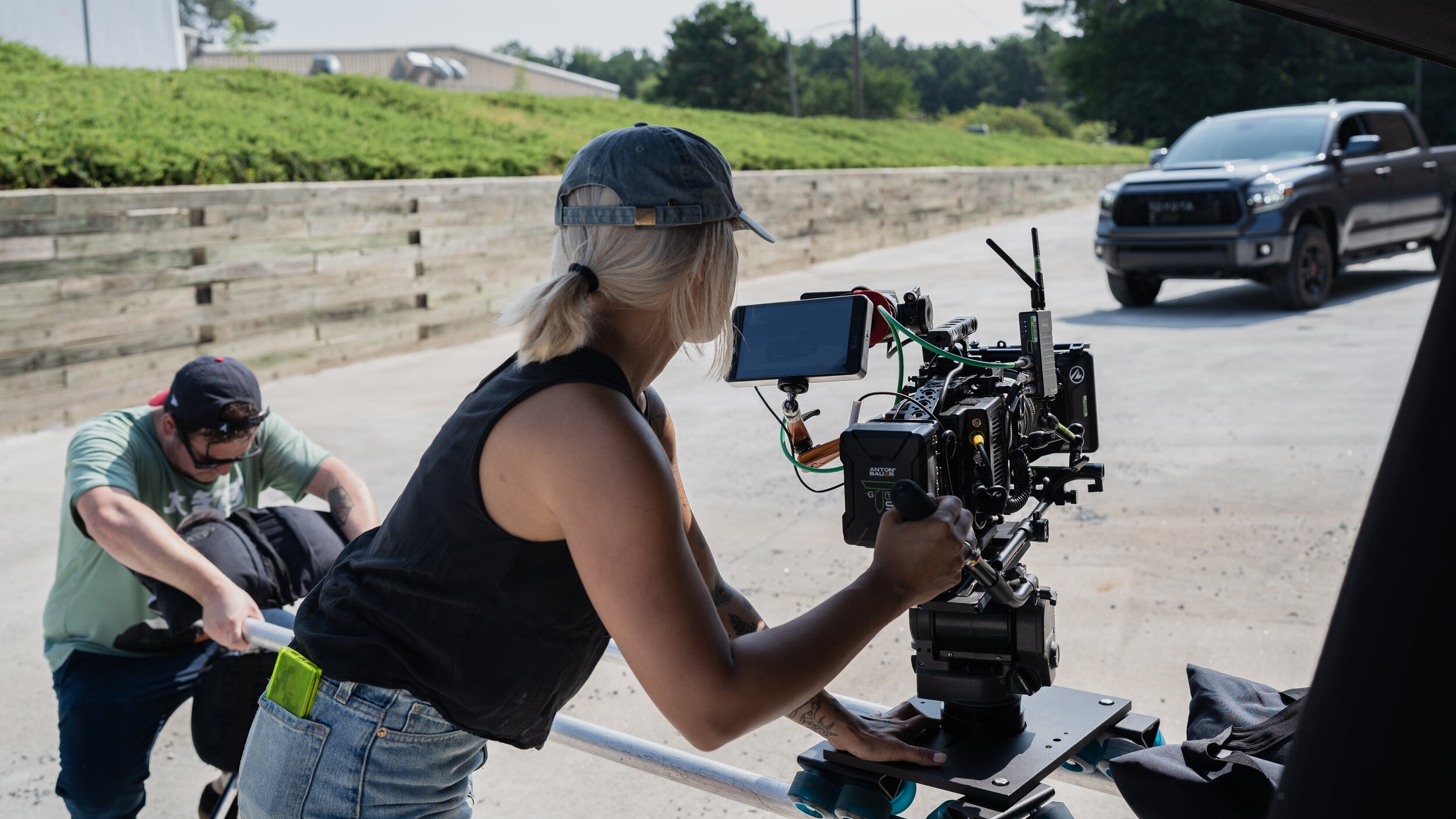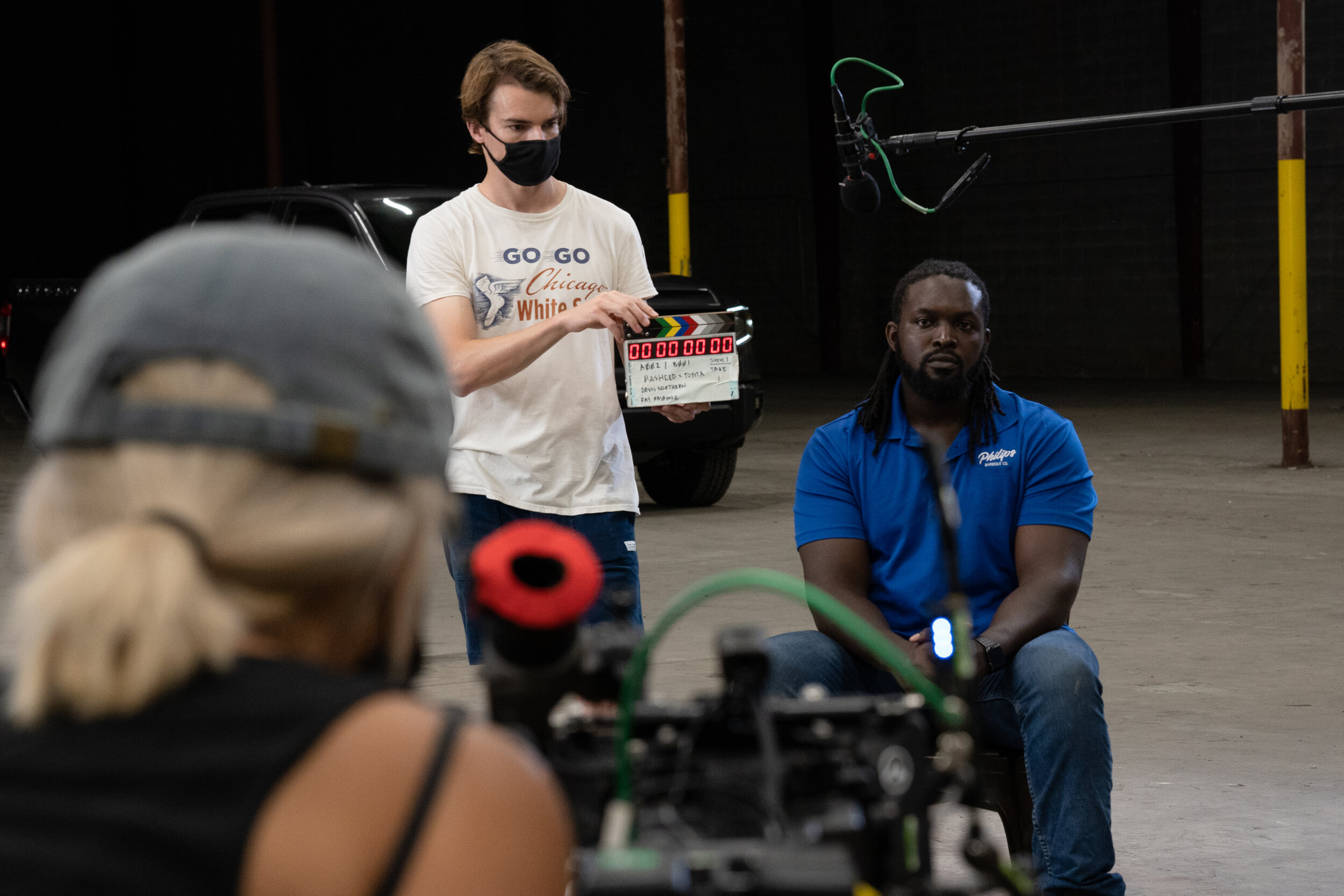Rasheed Philips x Toyota BTS
Have you ever heard the phrase “a picture is worth a thousand words”? It’s one of those cliches you hear so often that is becomes fact. This phrase is commonly used to describe how the viewer feels about the finished product but doesn’t take in to account the story it took to get there. The finished product doesn’t tell the story of “how the sausage gets made.” Back in August, I got to be part of how sausage making process.
A friend of mine, Rasheed Philips, invited me to document the behind-the-scenes (BTS) process of making a commercial advertisement piece for the Toyota brand. This was my first opportunity to see a professional project, up close, while also getting an opportunity to use my photography skills. The entire process was eye-opening, inspiring and a bit daunting. Seeing the amount of time and attention to detail that goes in to creating what will likely be a short commercial gave me an entirely new perspective on film-making and content creation.
For me, the day began at 10AM. The film crew had obviously been there a couple of hours prior to my arrival, based on the equipment having been set up and filming of the Toyota Tundra truck already taking place. One of my first observations was the number of people on set. The director and directory of photography (DP), most notably, as well as someone in charge of lighting, someone coordinating logistics, someone managing the Tundra and a person dedicated to sound design. Each of these individuals had an integral role to play in bringing the finished production to life. I was quite intrigued with how they interacted with each other to make a vision become a reality.
When I first arrived, the crew was shooting the Tundra while it was sitting idle. But within the hour, we were on the move. We needed shots of the truck in motion but first needed to scout out the area for an optimal path for both filming and driving. My familiarity with the area provided me with an opportunity to act as a “consultant” for this portion of the filming process. Once we had a course charted, in came the talent, Rasheed.
Both the level of coordination and the pain staking process of getting the right shots was truly eye-opening. There were a number of hurdles during this process of filming which had to be overcome, from Georgia’s quickly-changing weather patterns to dealing with a pedestrian leisurely strolling through the course while shooting was in progress. The entire process took over an hour, from scouting to actual filming. Throughout this process, there was a tremendous amount of coordination between the parties in both vehicles and the team back at the main filming location to ensure everything went to schedule and tasks were completed.
After completing the driving portion, we moved back to the primary filming location to film the interview, cook and the serve the food. The cooking was barbecue-based and as with any barbecue-based event in Georgia, it is subject to weather. In our case, the torrential downpour began which presented a new obstacle: completing filming in a rain storm.
“Wet wood doesn’t burn.”
- Rasheed Philips
Due to the inclement weather, the filming schedule had to be re-arranged to ensure production could be completed. This caused the entire team to pivot to the interview portion and hope that the storm blew over before nightfall. This also forced production in to a warehouse for shooting, instead of the originally intended outdoor shooting. The shooting schedule only allowed for a single day to get all the shots needed for the final product which required changes to be made on-the-fly. I essentially received a first-hand masterclass in dealing with setbacks and pivoting to the next best options.
The crew moved all of the lighting, camera gear, sound equipment, Tundra truck AND smoker in from the downpour. The stage was then set to execute the interview, which further revealed the level of coordination and planning required to get to a finished product. After putting everything in place, both the director and Rasheed sat down to conduct the interview. Throughout the entire process, the team remained united and focused on not only communicating with each other but with Rasheed. The director was prepared with poignant questions which led to introspective answers. The DP had a shot list prepared and worked with the director to ensure the overall vision was achieved as accurately as possible. This process took well over an hour and presented yet another hurdle: we were losing light outside for any additional shots.
Rasheed wanted to keep the commercial as authentic as possible so he invited the employees from one of his most supportive local breweries to come and be part of the production. The original plan was to shoot a picnic-styled meal outside but the weather caused those plans to shift to an indoor meal. Regardless of this change, the director and film crew wasted no time. They laid out the concept, provided direction to the brew masters and completed the filming to wrap up production around 10:30 PM.
Over twelve hours after the initial filming began, the team had completed production despite the multitude of issues that arose. And I came away with a much more well informed view of what it takes to get even a short production off the ground. Overall, I was quite impressed with the level of coordination, patience and adaptability of all parties involved. Despite the many challenges, the entire team operated with one unspoken understanding: the job must get done. And all this while still being willing to answer many of my questions, someone who was seeing this all for the first time.
I am truly appreciative of this opportunity and the perspective I received. It reminds me that even though a picture is worth a thousand words, those words do not tell the story of how the sausage gets made.













